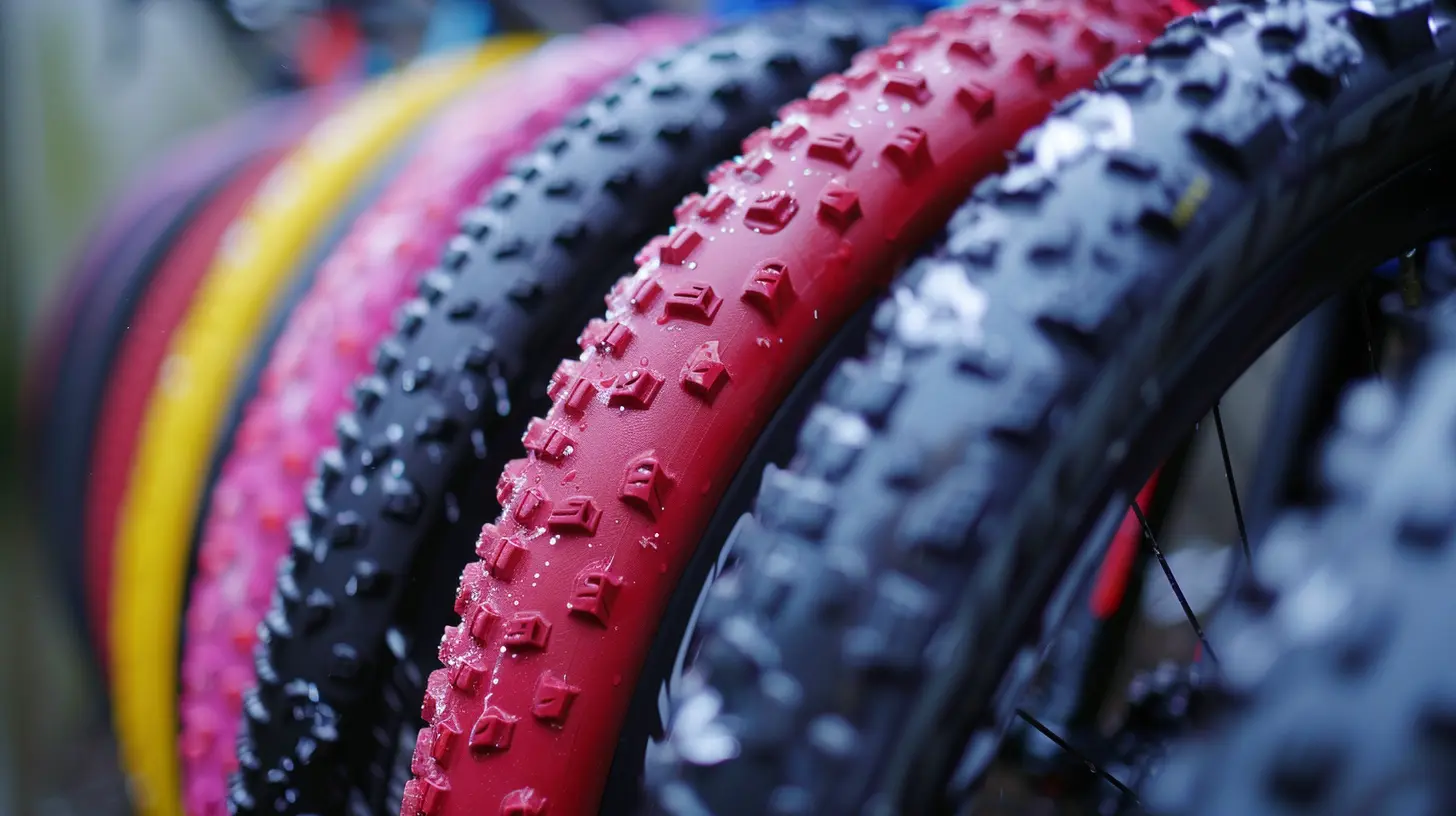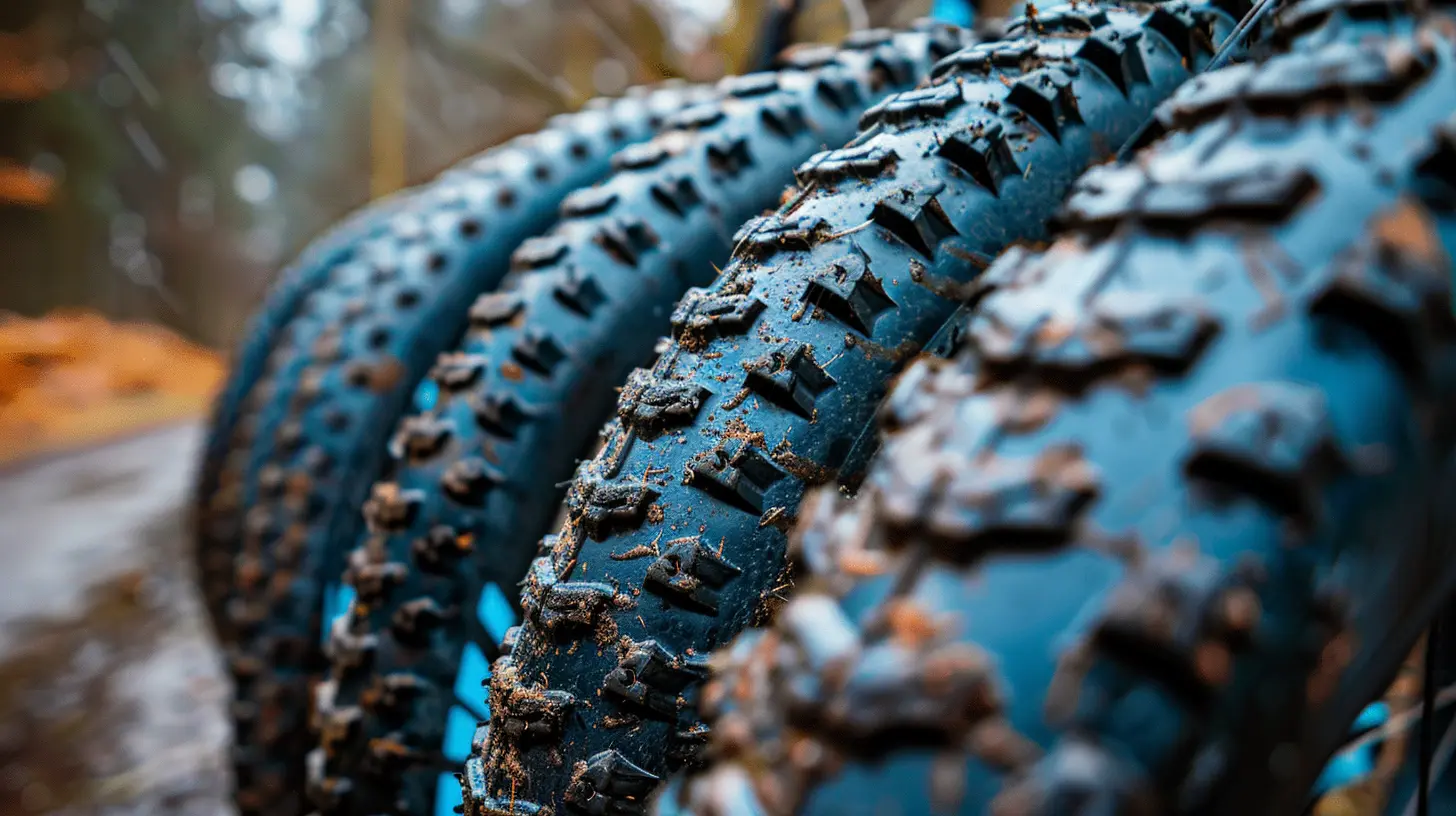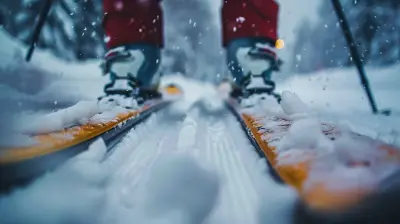How to Choose the Right Tires for Different Cycling Conditions
22 August 2025
Let’s be honest—cycling isn’t just about spinning those pedals and admiring the scenery. It’s also about making smart choices that keep you rolling smoothly. One of the most overlooked yet absolutely game-changing decisions you’ll make? Choosing the right tires for your ride.
Yeah, we're talking rubber, treads, widths—every little detail matters. Tires are the only contact point between you and the road (or trail, or gravel, or whatever you’re riding on), so it makes total sense that the kind you choose can completely change your biking experience.
So, are you ready to nerd out (in the best way) about bike tires? Good, because we’re diving deep into how to choose the right tires for different cycling conditions. From slick city streets to gnarly mountain trails, we’ve got you covered.
Why Tire Choice Matters More Than You Think
First, let’s lay it out plain and simple: Your tires impact your speed, comfort, control, and safety. That’s not an exaggeration.Imagine wearing flip-flops on a snowy hike. Not exactly a wise choice, right? The same logic applies here. The wrong tires can make your ride feel sluggish, bumpy, or downright dangerous.
So what should you look for? Three key factors:
- Terrain – Where are you riding?
- Weather – Dry, wet, muddy, snowy?
- Purpose – Racing, commuting, leisure cruising?
Now let’s break this down further and get into the nitty-gritty.
Road Cycling Tires: Speed Demons Need Not Fear
If you're pounding pavement, you need tires that are built for speed and efficiency. Think of them as the high-heels of the cycling world—sleek, fast, but not exactly made for running in the mud.Key Features to Look For:
- Narrow Widths: Typically 23mm to 28mm. Narrow tires reduce rolling resistance.- High PSI (Pressure): Inflated to 80–120 PSI for better speed on flat surfaces.
- Minimal Tread: Smooth or slick tires give you max contact with the road, reducing friction.
When to Upgrade:
If you’re commuting or riding long distances, consider going up to 32mm tires. They’re comfier and more forgiving over bumpy roads.And hey, tubeless tires are worth a look too. They reduce pinch flats and allow for lower pressures, offering a smoother ride without sacrificing speed.
Mountain Bike Tires: Grip It and Rip It
Ah, mountain biking—the wild, muddy, root-strewn adventure sport your mom warned you about. For this kind of riding, durability and grip are the name of the game.Tire Types by Terrain:
- Cross-Country (XC): Lighter, narrower (1.9"–2.25"), faster rolling.- Trail and All-Mountain: Wider (2.25"–2.4") with aggressive tread. A good all-around option.
- Downhill (DH): Super wide (2.4”–2.6+”), ultra-tough, and heavy-duty for gnarly descents.
Tread is King
For trail riding, go for medium-sized knobs that balance grip and rolling efficiency. Muddy or loose terrain? You’ll want deep, spaced-out lugs to dig into the surface and shed muck.Worried about flats? Many riders now run tubeless setups. They’re resistant to pinch flats and can self-seal small punctures, which is pretty rad.
Gravel and Adventure Tires: The Swiss Army Knife of Rubber
Gravel riding is like a choose-your-own-adventure game. One minute you’re on asphalt, the next you’re bombing down a fire road. Your tires need to be ready for all of it.What to Look For:
- Width: Typically 35mm to 50mm. Wider tires give better cushion and grip.- Tread: Semi-slick in the center for speed, with knobbier edges for cornering control.
- Durability: Reinforced sidewalls or puncture-resistant layers help prevent flats in remote areas.
Pro Tip:
Lower your tire pressure when hitting the rough stuff. You’ll get better traction and a smoother ride. But not too low—nobody likes a rim strike.Commuting & Urban Tires: All Business, No Drama
Urban riders need tires that can handle potholes, glass shards, rain-slick streets, and random curbs—all while being efficient enough to get you to work on time.Your Best Bets:
- Hybrid Tires: These are the Goldilocks tires—not too slick, not too knobby.- Puncture Protection: Kevlar layers, extra thick casing… whatever it takes to avoid being "that person" fixing a flat on the sidewalk.
- Reflective Sidewalls: Bonus safety points in low light.
Also, consider a tread pattern that channels water away on rainy days. Hydroplaning on a bike? Yeah, it’s a thing.
Wet and Muddy Conditions: Grip or Slip
Let’s not sugarcoat this—wet conditions can turn even a mellow ride into a slip ‘n slide. Choosing the right tire here can literally keep you upright.Must-Have Features:
- Aggressive Tread: Deep, spaced knobs that bite into soft ground.- Softer Rubber Compound: Grips better on wet surfaces but may wear faster.
- Lower PSI: Improves traction by increasing surface contact.
If you're mountain biking in the rain, don't mess around. Go full mud tire. These have tall, widely spaced knobs that won’t clog up with debris.
Ice and Snow Riding: Winter Warriors Unite
Yes, you can absolutely ride your bike in the snow—as long as you’ve got the right tires. This isn’t your summer rubber’s time to shine.Winter Tire Essentials:
- Studded Tires: Sharp metal studs grip icy surfaces and prevent washing out.- Fat Tires: Think 3.8” and up. They float over snow like snowshoes.
- Low Pressure: Run as low as 5–15 PSI for maximum grip and floatation.
Hot tip: Store your studded tires properly in the off-season. The studs can rust if left damp, and that’s just a sad way to end a winter hero story.
Choosing Tire Width: It’s Not All About Looks
You might think skinny equals fast and wide equals slow, but there’s more to the story.- Narrow Tires (Under 30mm) – Fast, efficient, but less forgiving.
- Mid-Width (30mm–45mm) – A sweet spot for comfort and versatility.
- Wide Tires (Over 45mm) – Super comfy and grippy, but also heavier.
Here’s a rule of thumb: Wider tires at lower pressure = more comfort + better grip. Narrower tires at higher pressure = more speed + less rolling resistance.
Match the width to your terrain and riding style, not just what looks cool. Trust me, your butt will thank you.
Tube vs. Tubeless: The Great Debate
Still riding with inner tubes? Cool, no judgment. But tubeless tires are gaining ground for a reason.Inner Tubes:
- Easier to install- Cheaper
- More prone to flats, especially pinch flats
Tubeless:
- Self-sealing punctures (with sealant)- Run lower pressure for better grip
- Trickier initial setup
If you're commuting, tubes are fine. But for off-road, tubeless is kind of a game changer.
Don’t Forget Tire Pressure
Tire pressure is like seasoning in cooking—get it wrong, and everything falls flat.- Too high = harsh ride, less grip
- Too low = squishy feel, risk of “burping” (losing air) on tubeless setups
Always check the sidewall for recommended PSI, but experiment within that range. A digital tire gauge can be your best friend here.
Final Thoughts: Tires Are the Silent MVPs of Your Bike
Look, tires aren’t as flashy as fancy carbon frames or electronic shifting, but they play a huge role in your bike’s performance. They’re the unsung heroes, the low-key stars of the show.Choosing the right tires for your riding conditions isn’t just about performance—it’s about safety, comfort, and confidence. So next time you’re browsing for bike bling, don’t ignore the rubber.
Because when you’ve got the right tires under you? Every ride just feels better.
all images in this post were generated using AI tools
Category:
CyclingAuthor:

Frankie Bailey
Discussion
rate this article
1 comments
Orionis McCaffrey
Choosing the right tires can transform your cycling experience! Embrace the journey, adapt to the conditions, and let every ride inspire you to push your limits. Keep pedaling forward!
September 17, 2025 at 12:08 PM

Frankie Bailey
Absolutely! The right tires are key to enhancing performance and comfort. Happy cycling!


